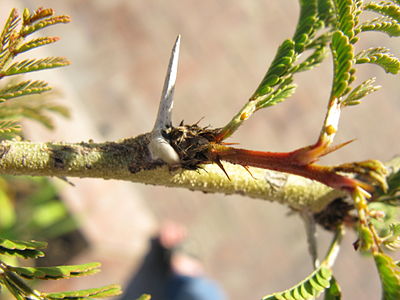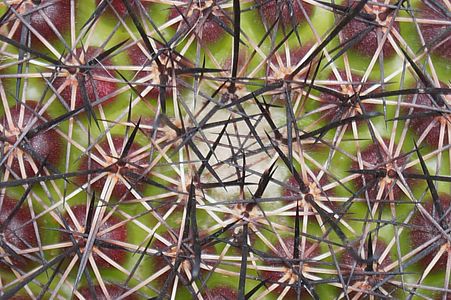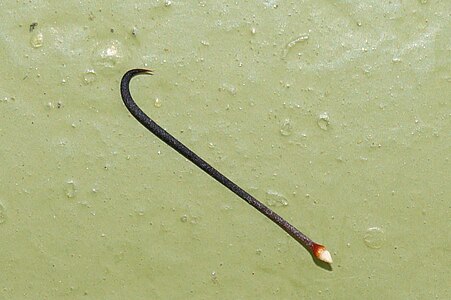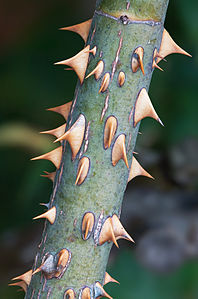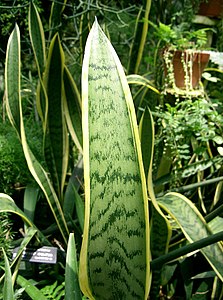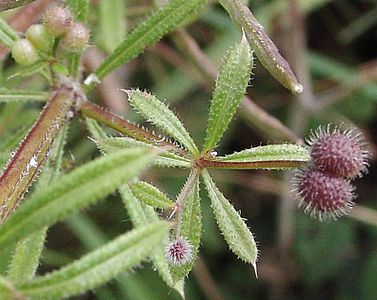
A herbivore is an animal anatomically and physiologically adapted to eating plant material, for example foliage or marine algae, for the main component of its diet. As a result of their plant diet, herbivorous animals typically have mouthparts adapted to rasping or grinding. Horses and other herbivores have wide flat teeth that are adapted to grinding grass, tree bark, and other tough plant material.

Robinia pseudoacacia, commonly known in its native territory as black locust, is a medium-sized hardwood deciduous tree, belonging to the tribe Robinieae of the legume family Fabaceae. It is native to a few small areas of the United States, but it has been widely planted and naturalized elsewhere in temperate North America, Europe, Southern Africa and Asia and is considered an invasive species in some areas, such as the temperate east coast of Australia where the cultivar 'Frisia'(Golden Robinia) was widely planted as a street tree before being classed as a weed. Another common name is false acacia, a literal translation of the specific name.

Trichomes are fine outgrowths or appendages on plants, algae, lichens, and certain protists. They are of diverse structure and function. Examples are hairs, glandular hairs, scales, and papillae. A covering of any kind of hair on a plant is an indumentum, and the surface bearing them is said to be pubescent.

In botany, a cortex is an outer layer of a stem or root in a vascular plant, lying below the epidermis but outside of the vascular bundles. The cortex is composed mostly of large thin-walled parenchyma cells of the ground tissue system and shows little to no structural differentiation. The outer cortical cells often acquire irregularly thickened cell walls, and are called collenchyma cells.

Kalanchoe beharensis is a plant species in the succulent genus Kalanchoe, and the family Crassulaceae. Kalanchoe beharensis is native to Madagascar known by local names mongy, rongy and tavitavy.

The epidermis is a single layer of cells that covers the leaves, flowers, roots and stems of plants. It forms a boundary between the plant and the external environment. The epidermis serves several functions: it protects against water loss, regulates gas exchange, secretes metabolic compounds, and absorbs water and mineral nutrients. The epidermis of most leaves shows dorsoventral anatomy: the upper (adaxial) and lower (abaxial) surfaces have somewhat different construction and may serve different functions. Woody stems and some other stem structures such as potato tubers produce a secondary covering called the periderm that replaces the epidermis as the protective covering.

Vachellia cornigera, commonly known as bullhorn acacia, is a swollen-thorn tree and Myrmecophyte native to Mexico and Central America. The common name of "bullhorn" refers to the enlarged, hollowed-out, swollen thorns that occur in pairs at the base of leaves, and resemble the horns of a steer. In Yucatán it is called "subín", in Panamá the locals call them "cachito". The trees are commonly found in wet lowlands

Plant defense against herbivory or host-plant resistance (HPR) is a range of adaptations evolved by plants which improve their survival and reproduction by reducing the impact of herbivores. Plants can sense being touched, and they can use several strategies to defend against damage caused by herbivores. Many plants produce secondary metabolites, known as allelochemicals, that influence the behavior, growth, or survival of herbivores. These chemical defenses can act as repellents or toxins to herbivores or reduce plant digestibility. Another defensive strategy of plants is changing their attractiveness. To prevent overconsumption by large herbivores, plants alter their appearance by changing their size or quality, reducing the rate at which they are consumed.

Vachellia collinsii, previously Acacia collinsii, is a species of flowering plant native to Central America and parts of Africa.
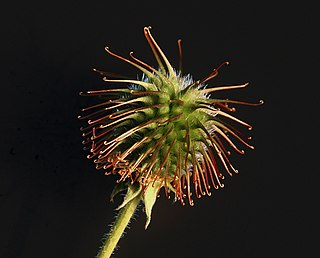
A bur is a seed or dry fruit or infructescence that has hooks or teeth. The main function of the bur is to spread the seeds of the bur plant, often through epizoochory. The hooks of the bur are used to latch onto fur or fabric, enabling the bur – which contain seeds – to be transported to another location for dispersal. Another use for the spines and hooks are physical protection against herbivores. Their ability to stick to animals and fabrics has shaped their reputation as bothersome.
This page provides a glossary of plant morphology. Botanists and other biologists who study plant morphology use a number of different terms to classify and identify plant organs and parts that can be observed using no more than a handheld magnifying lens. This page provides help in understanding the numerous other pages describing plants by their various taxa. The accompanying page—Plant morphology—provides an overview of the science of the external form of plants. There is also an alphabetical list: Glossary of botanical terms. In contrast, this page deals with botanical terms in a systematic manner, with some illustrations, and organized by plant anatomy and function in plant physiology.
Important structures in plant development are buds, shoots, roots, leaves, and flowers; plants produce these tissues and structures throughout their life from meristems located at the tips of organs, or between mature tissues. Thus, a living plant always has embryonic tissues. By contrast, an animal embryo will very early produce all of the body parts that it will ever have in its life. When the animal is born, it has all its body parts and from that point will only grow larger and more mature. However, both plants and animals pass through a phylotypic stage that evolved independently and that causes a developmental constraint limiting morphological diversification.
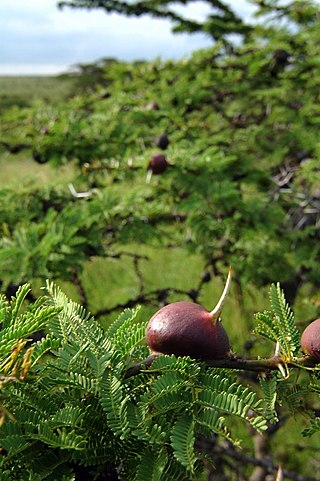
Vachellia drepanolobium, more commonly known as Acacia drepanolobium or whistling thorn, is a swollen-thorn acacia native to East Africa. The whistling thorn grows up to 6 meters tall. It produces a pair of straight spines at each node, some of which have large bulbous bases. These swollen spines are naturally hollow and occupied by any one of several symbiotic ant species. The common name of the plant is derived from the observation that when wind blows over bulbous spines in which ants have made entry and exit holes, they produce a whistling noise.
This glossary of botanical terms is a list of definitions of terms and concepts relevant to botany and plants in general. Terms of plant morphology are included here as well as at the more specific Glossary of plant morphology and Glossary of leaf morphology. For other related terms, see Glossary of phytopathology, Glossary of lichen terms, and List of Latin and Greek words commonly used in systematic names.

A stem is one of two main structural axes of a vascular plant, the other being the root. It supports leaves, flowers and fruits, transports water and dissolved substances between the roots and the shoots in the xylem and phloem, photosynthesis takes place here, stores nutrients, and produces new living tissue. The stem can also be called halm or haulm or culms.
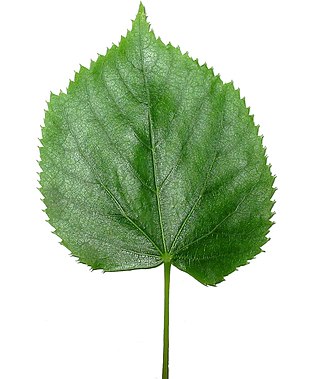
A leaf is a principal appendage of the stem of a vascular plant, usually borne laterally aboveground and specialized for photosynthesis. Leaves are collectively called foliage, as in "autumn foliage", while the leaves, stem, flower, and fruit collectively form the shoot system. In most leaves, the primary photosynthetic tissue is the palisade mesophyll and is located on the upper side of the blade or lamina of the leaf but in some species, including the mature foliage of Eucalyptus, palisade mesophyll is present on both sides and the leaves are said to be isobilateral. Most leaves are flattened and have distinct upper (adaxial) and lower (abaxial) surfaces that differ in color, hairiness, the number of stomata, the amount and structure of epicuticular wax and other features. Leaves are mostly green in color due to the presence of a compound called chlorophyll which is essential for photosynthesis as it absorbs light energy from the sun. A leaf with lighter-colored or white patches or edges is called a variegated leaf.
Plants and herbivores have co-evolved together for 350 million years. Plants have evolved many defense mechanisms against insect herbivory. Such defenses can be broadly classified into two categories: (1) permanent, constitutive defenses, and (2) temporary, inducible defenses. Both types are achieved through similar means but differ in that constitutive defenses are present before an herbivore attacks, while induced defenses are activated only when attacks occur. In addition to constitutive defenses, initiation of specific defense responses to herbivory is an important strategy for plant persistence and survival.

In botany, a fascicle is a bundle of leaves or flowers growing crowded together; alternatively the term might refer to the vascular tissues that supply such an organ with nutrients. However, vascular tissues may occur in fascicles even when the organs they supply are not fascicled.
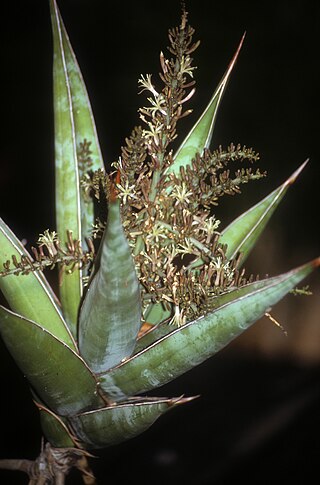
Dracaena pinguicula, synonym Sansevieria pinguicula, also known as the walking sansevieria, is a xerophytic CAM succulent native to the Bura area of Kenya, near Garissa. The species was described by Peter René Oscar Bally in 1943.
Plants are constantly exposed to different stresses that result in wounding. Plants have adapted to defend themselves against wounding events, like herbivore attacks or environmental stresses. There are many defense mechanisms that plants rely on to help fight off pathogens and subsequent infections. Wounding responses can be local, like the deposition of callose, and others are systemic, which involve a variety of hormones like jasmonic acid and abscisic acid.










